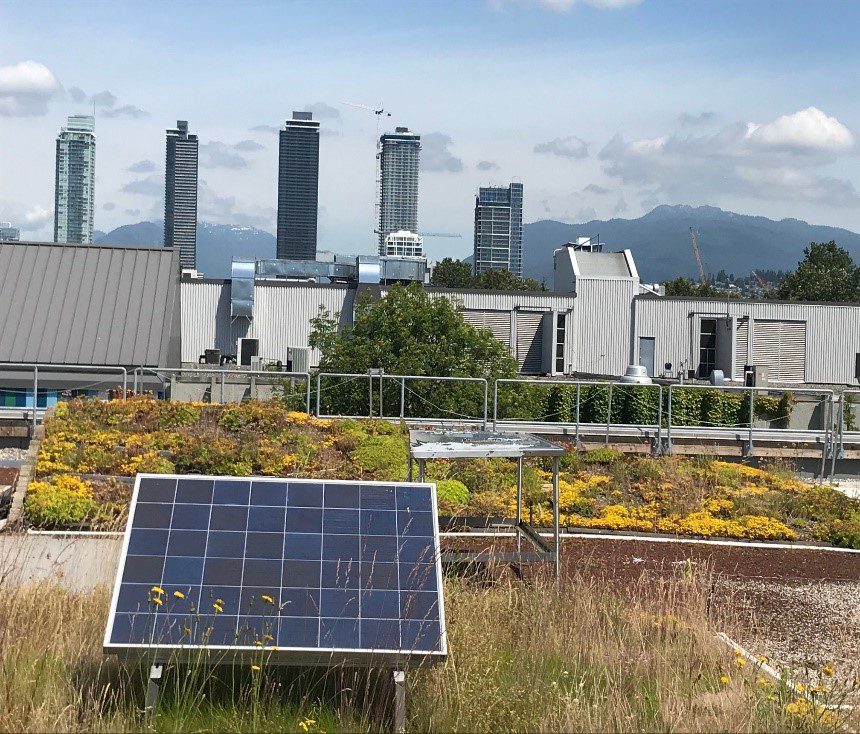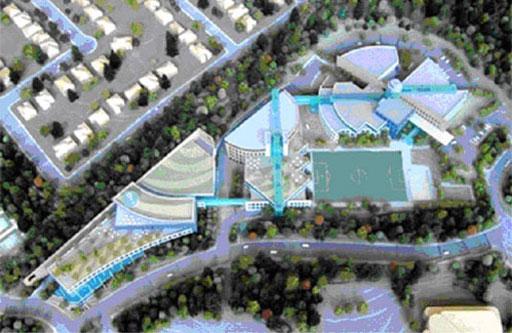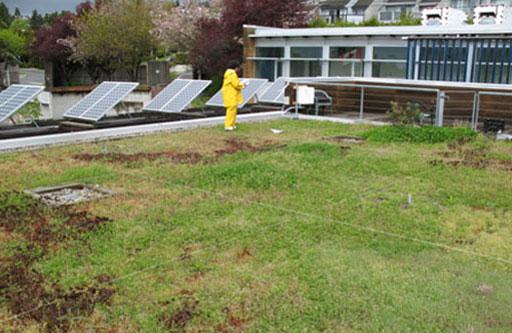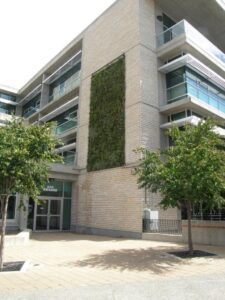Building Environmental Quality Lab
Page in construction…
Living architecture lab
The Elevated Lab has served as a collaborative catalyst within and between various departments at BCIT, including Carpentry, Steel Trades and Piping Trades, as well as Forestry and Natural Areas Management, Indigenous Services, Campus head chefs, Campus Planning and Facilities, and more!
The ‘Technologies’ section showcases a range of what is possible for extensive green roofs with limited load bearing capacity, including solar panels, a small wetland, food growing, and indigenous designs symbolizing truth and reconciliation. The ‘Ecologies’ section is used to advance our understanding of the capacities of extensive green roof systems with respect to community ecology (plants, soils, pollinators), while advancing the practice of regenerative design for healthy cities and ecosystems.

The green roof and living wall industries have ensured that this lab has the most up to date material samples and resources documents of living architecture technologies. The lab space is available and equipped for evaluation of soils and plants and their environment. Currently, a variety of living walls systems are in the lab. These living walls have been moved from the lab, into classrooms, into an air quality chamber, into the reverberation chamber and across the city to UBC CIRS building all in the name of research. And they continue to thrive!
To evaluate green roof performance in different contexts, designs, and climatic zones, the Centre for Architectural Ecology is monitoring sites within a regional infrastructure network. This network comprises projects of various sizes, slopes, exposures, components and integrated technologies.
Electronic Arts Motion Capture Studio (Burnaby)
In 2007, BCIT instrumented the 1,700 m2 (18,000 ft2 extensive green roof on the EA Motion-Capture Studeo to monitor and evaluate stormwater runoff and membrane temperatures. Preliminary data shows that the extensive green roof is extremely effective for these functions. A monumental rain event exceeding a 10 year storm occurred in September 2007, and the green roof delayed runoff for 3 hours and reduced peak flow by 90%. And over the course of the warm season, the temperature of the membrane under the green roof fluctuated by 5°C instead of the typical 41°C.

White Rock Operations Centre (White Rock)
The White Rock Operations Building is a low-rise office building in the City of White Rock. An extensive green roof was installed and planted in 2003 to serve as demonstration, for stormwater mitigation, and for the building’s LEED Gold certification. In 2007, the Centre for Architectural Ecology instrumented, calibrated and begun monitoring the 135 m2 (1,450 ft2) extensive green roof for its effectiveness as a stormwater source control tool. For the building proper, results will translate into a post-occupancy evaluation.

Capital Region District Headquarters (Victoria)

In partnership with the Capital Regional District (CRD), the Centre will establish a field testing site to monitor an extensive green roof, an intensive green roof and a living wall on CRD Headquarters Building in Victoria, BC. The goal of this project is to assess the effectiveness of these technologies for improving water quality, to promote best practices, and to contribute to the building’s Phase 2 LEED Gold certification. Being the first pilot test centre on Vancouver Island, the data may prove useful to other communities and jurisdictions, particularly those in the south (i.e. Nanaimo, Cowichan Valley Regional District, Ladysmith).